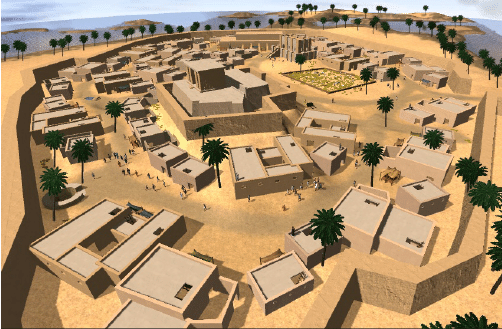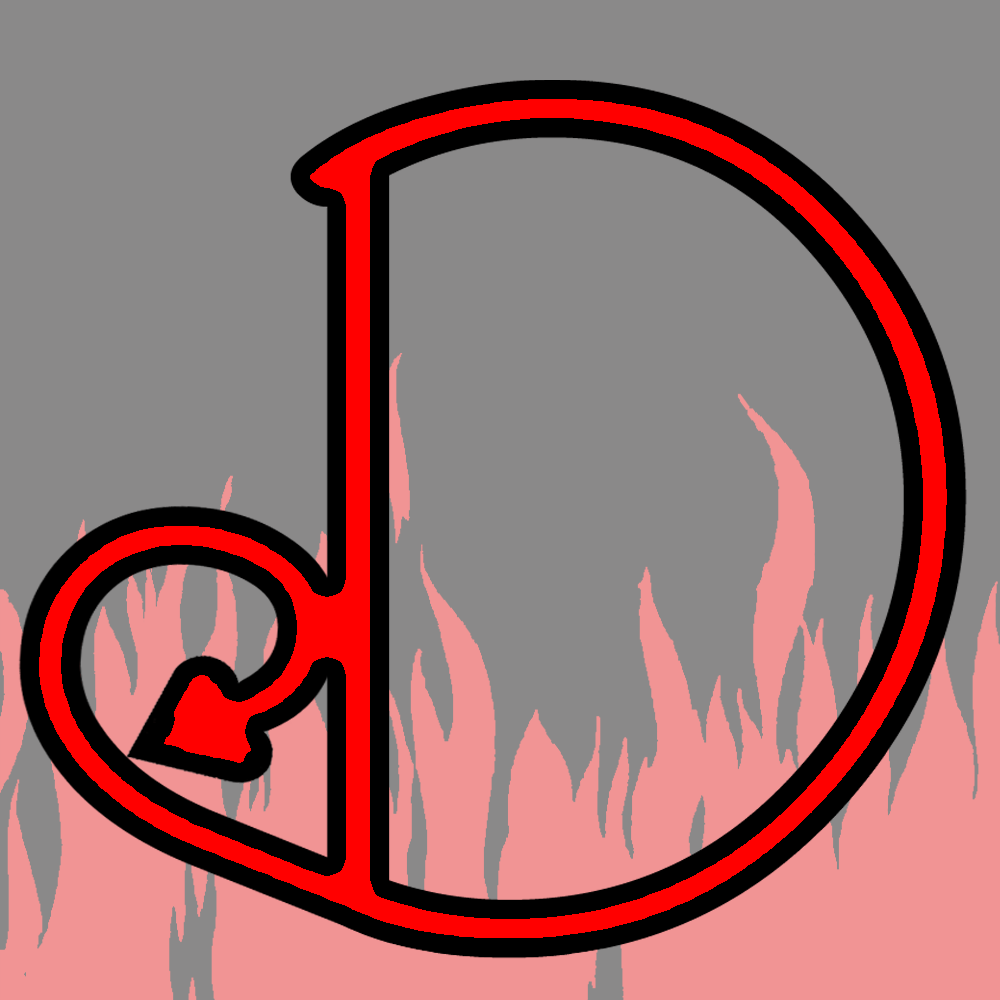
Well! It has been an absolute heck of a week as central Texas turned into our very own Lake Cocytus and we experienced five degree weather, some of us for the very first time. Don’t laugh, it’s not cold by everyone else’s standards, but we’re not rated for this, really. It’s good to be back to what we’ll generously call normal!
No drink recipe this time, we recommend grabbing whatever you have on hand that’s safe, we went with lawn ice and everclear.

A happy find from the Half Price Books down the street: Mickey’s Inferno! This weird little gem is a 2014 reprint of a 1948 Disney comic from Mouse House’s Italian imprint that lovingly if not faithfully retells Dante’s Inferno for a younger crowd. We have our doubts though. It’s a great comic for members of the hell fandom, and and an interesting cultural artifact, published just after World War II and Italy’s fascist period. More on our blog, but get yourself a copy if you can!

Your hosts are divided as to which one of these is sacred music. Patrick Cassidy, who did the score for “Hannibal,” is returning to his remarkable piece, Vide Cor Meum, into an opera of Dante’s life, love, and work. Also, we’ve had the B-52’s song “Mesopotamia” stuck in our heads. I should read a book! And Vic gives a callout to Quincy Jones’s “Bossa Nova” by way of Austen Powers, so…I’ll just throw that into today’s playlist.
Since we don’t have any drinks for you, please have some food porn. Feel free to start out with the Gelatin Art Market’s gallery pages, beautiful gelatin art cakes (which Victoria was talking about.) Jamin and Jacob were chattering about “water cakes,” which were briefly trending in 2014. Also called “Unicorn tears.” I love stunt cooking, so I learned to make them, working from this recipe blog. They’re amazing perfect little globes made with spring water and just a pinch of agar gelatin, with a flavor that’s kind of like the smell of a crystal clear pond in a Miyazaki film, or possibly licking ghosts. When you dip a spoon into them, they just melt. Frankly, when you look at them cross-eyed, they turn into puddles. My base recipe uses more agar than the original, and is just a bit opaque but in a nice way:
Water Cake (three 2.5-inch servings)
1/4 tsp powdered agar, slightly rounded.
1 Tbsp granulated sugar
1 1/4 C water (spring water recommended)
Pour agar into a medium saucepan. Add a few tablespoons of water and mix well. Gradually add the remaining water. Add sugar and mix again.
Bring to a moderate boil, stirring occasionally, to thoroughly dissolve the agar. Remove from heat, cool to a temperature that won’t deform your plastic molds.
Using a funnel pour into spherical ice molds (I’m using 2 1/4-inch “Prepara” molds. Chill a few hours or overnight. Carefully decant onto plates, serve with toppings of your choice.
Toppings should be subtle. I was planning out the menu for my water cake food truck, and from top to bottom we have “Kheerly There” (sweetened condensed milk with saffron, pistachios with a pinch of cardamon), “Green, White, and Blue” (vanilla sugar syrup and blackberry puree, toasted almonds with a bit of matcha powder), “The Princess” (coconut cream and lychee syrup, with some sweetened coconut chopped fine, a bit of sugar, and a few sprinkles), and “The Traditional” (brown sugar syrup and a small scoop of kinako soybean flour, or toast some dried soybeans and blitz them for a few seconds.) The plates are still available from Miya Tableware.
Why am I telling you this?
– Jacob




Mesopotamia – Just the Facts
Much of our research came from Wiki, there’s no shame in that, and their articles on the History of Mesopotamia, the Mesopotamian Underworld, Geography of Mesopotamia,and Ancient Mesopotamian Religion really formed the backbone of this episode. I’d also strongly recommend this rich, but somewhat incomplete, Ancient Mesopotamian Gods and Goddesses project, extremely helpful for contexts. I also leaned heavily on Bienkowski and Millard’s Dictionary of the Ancient Near East. The Ancient History Website has a great constellation of articles, and most of our info on the etemmu came from their work; a phenomenal place to start your research! Later I used these two translations for Inana’s Descent to the Netherworld and Ishtaar’s Descent.
Jacob started his research on the reclining sofa, with ice cream, fuzzy paw slippers, and “The Sumerians – Fall of the First Cities.” Share and enjoy.
Uruk was pretty amazing. True story. (picture from Tomas Trescak)
With numbers ranging from 40,000 to 1.5 million (counting “suburbs”), it may have had as much as 5% of the world’s total population in its glory days. It was Gilgamesh’s home, Ishtaar’s primary temple, and put the “Ur” in Urban. (I wish I’d said that while we were recording…) and was inhabited from at least 3800 BC to 700 AD. It even gets a callout in the Book of Genesis (10:10, ““His kingdom started with Babylon, Erech, Accad, and Calneh, in the land of Shinar.”)
A habitation so old that it became myth, even while it was still occupied. I keep going back to it, but so much of our written culture was touched by this empire, and we’ve only been really able to start learning about it in the past 150 years or so. It’s like the mitochondrial RNA of legend. If you’re studying folklore in any way, it’s impossible to know what threads this real city, inhabited long ago by real people, influences.
Enough gushing…

,So here’s a fun cartography website: Timemaps.com shows regional maps across history, making it easy to compare “then” with “now.” As a for instance, you can see the shape of the Tigris and Euphrates across 5000 years, from Mesopotamia, 3500 BC to Roman control in 200 BC to Modern Iraq.



No doubt you’re terribly interested in how Archbishop James Ussher calculated the age of the world to the month and day. I suspect some creative interpretation was involved, but Creation.Com has a great timeline, at least to the AD marker. Presumably the rest is a doddle.
Etemmu
So, a bit of a concept word. The etemmu, according to the Ancient History Encyclopedia, is not the soul. Instead, it’s an aspect of the physical body, a thing that sleeps in the ground with the corps. Did it exist before death? Unknown. But at the moment of death, a person changes from a living person to an etemmu. Death marks that transition. Given how shabby life was in the netherworld, maybe the knowledge that your grandma was an echo of herself, rather than herself, gave some solace to the living.
Sometimes they come back, of course. Etemmu that didn’t get their fair share of offerings could come back as ghosts, cursing their relatives. But, again, was this the dead person, or just a strange natural function that resembled them? Not even wikipedia truly knows.
Infernal Geography
Again, start at one of these two very solid resources: Ancient Mesopotamian Beliefs in the Afterlife (Ancient History Encyclopedia), and Wikipedia, Ancient Mesopotamian Underworld.
All these resources are a bit of a hodge-podge, since “Mesopotamia” isn’t really a thing, but a retrospective mashup of five-ish empires over 3000 years. The mythology becomes more elaborate as stories accumulate and are absorbed from other culture, so this complex mess below is probably much later in the story.
What we know:
“As Above, So Below:” The Netherworld (we’ll call it Kur) was a reflection of Heaven, and both were probably a reflection of the great cities: Central focus on a Ziggurat/temple-palace district, seat of both the King and the city’s patron god or goddess; then a somewhat more posh area for traders and education; then a somewhat less posh area for laborerers, then the agricultural outlying region. Cities were bordered and in part defined by a river.
“Dark, Bleak, Dusty:” The dead are described as eating clay and dust, sometimes they drink mud. There ARE exceptions, in one story there’s a banquet for a prince. However, the rule is dust and darkness. At times the sun god visits since he has to go under the world at night, but that seems to be technically true without being meaningful. The dust is EVERYWHERE, impossible to escape. We’ll probably talk more about Gilgamesh and Enkidu…Gilgamesh talks to Enkidu (his deceased bestie) and asks, depending on the prudery and heteronormative/lavender agenda of the translator, “do people have sex?” or “can we have sex?” Enkidu responds, basically, “no, my crotch is full of dust.” So there’s an image.
Desert: “Desert” is actually one of the many names of the netherworld, emphasizing 1) it’s so far away from the civilized land of the living, 2) it’s kind of far away from the gods (who live in temples), 3) the dust. To get to Ganzir (the city of the dead) or Kur (the underworld) you have to cross a great desert plain or steppe.
River: The river Huber is a barrier between the heart of the land of the dead and the empty wasteland plains. It’s also a word for death; Marduk resurrects someone by lifting them out of the Huber, which Yahweh/El does in the bible as well (Ezekiel 47:6). Apparently Huber is in the distant past another name for Tiamat, or at least associated with her, but by and large Tiamat isn’t a part of the glory days of Mesopotamia, mostly absent from 2000-1000 BC. So we’ll ignore that for now.
Staircase: Apparently there’s a staircase that goes down below the ocean under the surface of the world, and this is the path to Ganzir proper. In this episode, there’s a brief bit of confusion when Victoria asks if the steps are dangerous. Days later, I realized she was asking about the steppes, which are dangerous. Doh. – Jacob
City/Palace: “Ganzir” is one of a number of names for Eriskegal’s palace in the underworld. It’s also the name of the underworld, and it might be a city instead of a palace, the jury is unsure. However, we know that there are 7 gates. Or 14. Probably 7. And at the center of them is the courtyard where Eriskegal and Nergal hold court. And now you know!
Okay, does this count? There is TECHNICALLY a car called an Incubus, sort of…but it’s a custom version of the Honda Civic, customized for/by/in the spirit of the rock band “Incubus.” I’m not sure that this counts. Maybe on a technicality. Research has not turned up a car called the “Succubus,” but if anyone sees one please send us a tweet or something.
Re: The Eridan: There’s really only a single entry for the Eridan on the internet, all other references use the same language, so perhaps that wasn’t much of a legend in the Levant. Wiki and the generally awesome Theoi website have more information on Eridanos, which is perhaps not quite the same. Though since no one has a real bead on where the Eridanos is and it was possibly non-canon even at the time, it may as well be in the Mesopotamian underworld. In Greek myth, the river is associated with amber (tears of the sun-nymph Heliades), the crash site of Phaeton’s solar chariot, and with the constellation Eridanus which looks like a zigzag line if you connect 11 random stars. Hail Eris.

sEnheduanna
Enheduanna, or possibly Hedu-Ana who was an En (a very solid title, basically lord or priest), has the first by-line in history. She’s also the first poet anyone can actually put a name to. And she has a statue. And she’s not just known for one good poem, but ha over 40, an entire collection of hymns and devotions, many in honor of Innana.
The Tablets of Wiki tell us that Enheduanna was the daughter of the first king of the Akkadian empire (who, in another first, may have been the first person ever to rule an empire.) This fellow, Sargon (great name, very Tolkein) had the politically savvy idea of installing his daughter as the priestess of Innara in the city of Ur, holding down his influence in the south of the kingdom.
One could argue that she has a few more literary firsts, as she may have invented author insertion fan-fic…her hymns “The Exaltation of Innana” and “The Curse of Akkade” reference her political ups and downs. Dante would copy this 3000 years later, but she did it before it was cool.
Amazingly, she may have even played a part of building the connection between Inanna and Ishtar, which is also impressive. Not many people can add “deicide” to their resume, either. If that’s what that is? Death by synchretism? I don’t know if there’s a word for that one.

Me
Most of what Jamin knows about Me he got from Neal Stephenson’s Snow Crash, which is undoubtedly THE best Mesopotamia-influenced cyberpunk novel of all time, and is, in fairness, a really good novel. Hackers uncover a dangerous new religion. The phrase “neurolinguistic hacking” is thrown around. It’s quite good.
In Snow Crash Me (wiki) Stephenson treats the me something like software manuals and software for civilization. This isn’t inaccurate. Wiki says they represent “a decree of the divine” and are “fundamental to the Sumerian understanding of the relationship between humanity and the gods.” This seems accurate but not terribly helpful.
Personally, I like the way White Wolf’s RPG Scion handles a similar idea, “Relics,” which are magic items that let a demigod channel their divine power. The signature character, a child of Thor, has a gun with a tiny chip of Mjolnir for its hammer, and it is a tool for him to use his Lightning powers. But it’s also a symbol of his powers, and a part of him.
Anyway, “me” is-are aspects of divinity and tools for developing culture, all at the same time. I think that if you said someone was the “God of Music,” they would have the me of music, which would be 1) the concept of “music,” 2) instructions for music, 3) probably a musical instrument, 4) the godly powers derived from music. At least, that’s how I’m reading this. In the canonical “me” list (mostly from the myth where Inana steals the me from Enki) there’s some stuff that seems like Stephenson’s “useful tips for building society”…priestship, shepherdship…some seem more like divine powers or aspects of a god…truth, terror, the flood.
In the story of Inana’s Descent, she gets dressed up for battle, and it seems likely, though perhaps not absolutely certain, that she’s adorning herself with the best me from her collection of stolen divine portfolios.
This translation emphasizes the me-ness of Inanna’s various adornments, which is also obvious if you can find a copy of the Sumarian transliteration back to back with an English copy (I can’t find it, I had it, it’s gone.)


The Descent of Inanna
There’s a lot of translations of this ancient story, and they don’t tell the same story. As the story of a powerful goddess descending on a journey into the underworld, you could easily read it as a feminist version of the Hero’s Quest: call to adventure, descent into the underworld, return with understanding. Or a goddess who evolves by meeting and reconciling her dark side.
Jacob here: those interpretations feel very modern. And don’t feel like it’s the story that we see here. A conquering deity of war descends into the underworld, unwanted, breaching the city’s defenses. Everyone tells her not to, this is a very bad idea. Yet she does. And even when the terrified goddess of the invaded underworld strips off her invader’s auras of power, she’s still overthrown. Only a universal rule protects her: the land of the dead is for the dead. And even that rule is broken, as the most powerful goddess returns to the living world, on the promise that she’ll find a replacement. All rules are broken. I don’t think there’s a compelling case that Inana learned anything. There are no consequences, Enki the pushover resurrects her, and her husband and sister-in-law take Inanna’s place in the hereafter.
But this isn’t a story about Ishtaar, it ends with “praise Erishkegal.” More about that in this very solid article, “Inanna’s Descent: A Sumerian Tale of Injustice.” What we’ve learned…the truly privileged are above justice, no matter how much pain their actions cause. but there’s something like honor in seeking justice. Inana/Ishtaar is an unstoppable force…and if you’ve read the Epic of Gilgamesh, you’d be in on the big joke that when Inanna says that she’s going to the underworld to mourn the death of Gugalanna, Erishkigal’s husband and the “bull of heaven,” she’s twisting a knife: Gugalanna died at the hands of Gilgamesh and Enkidu, after Inana summoned him to defend her “honor” when Gilgamesh said he wouldn’t be joining her in bed.
Inana is a great goddess, but her dark side isn’t her sister under the earth, it’s the deep, deep well of privilege she carries with her.
Life’s not fair, even for the gods.
If you’re excited by reading a really neat academic article on this whole mess, Rodrigo Cabrera’s “The Three Faces of Inanna” is pretty rich. Highlights: Inanna representing duality between underworld and heaven (page 54), the aura of terror and magnificence radiated by gods (44-45), the idea of a travelling liturgical performance/passion play moving from Ishtaar’s home in Uruk to the city of Akkad (which, I think, may have been the home of Ekur, the equivalent of Mount Olympus? I’m not sure.) (55) There’s all kinds of rich work in this one, well worth the read, it opens up the depth of this story.

As yet another damned aside, way back in 2016 Johnny Depp and Amber Heard made a few choice mistakes involving Australia’s very, very strong laws about importing plants and animals, their pet yorkies, and the importance of declaring everything at Australian customs. What a mess. Through a quirk of fate we ended up dogsitting them, and two of the three hosts have been drooled on by the little crittters. Our very distant, second-hand brush with celebrity.

On a lighter note, what music would you pick for Inanna’s “Dressing for Battle” montage? Here’s our selections! Lady Gaga’s “Bad Romance” is ALMOST PERFECT except that Inanna’s wings point upward, not downward. Someone point this out to her team of 750 enslaved designers.
We could easily come to blows over what is a god or goddess’s alignment. However, the good people at TSR Inc. have already done the work for us. Ishtar is Neutral, which is ambivilent or, as the game evolved, simply not taking a side. Gilgamesh, interestingly, is Neutral Good…he’s AWFULLY RAPEY for Neutral Good…seriously how does NG stack up with “Giglamesh is a great king, noted for his tyrannical rule?” Inanna is Lawful Evil, which..h is again kind of weird, though I could see the “evil” part…not the Lawful part, though.
Erishkegal doesn’t make the list, at least in the 1980 Deities and Demigods text. She has a brief mention in Dragon #16.
However! Way way up in 2005, check out Dragon Magazine #329, which has a nice 3rd edition write-up of the Mesopotamian pantheon, which seems, well, a lot more informed than the 1980s version. Ishtar is Chaotic Neutral, with “Trickery” in her portfolio. Nice! Nergal…well, he should have fire in his portfolio, in my opinion, but not a bad representation. and Ereshkigal is Lawful Evil here, which feels right. “The clerics are taught that success in life is reflected in the afterlife.” That does feel lawful evil. But she’s also a goddess of wisdom, and, importantly, the law. Article by David Schwartz.
Bonus! An entire feature on Pazuzu by James Jacobs, page 56 🙂 You know we’re fans!
with thanks to Alzrius for this very helpful post on the history of Mesopotamian deities in D&D. Oh, the internet is full of wonders.


Podcast: Play in new window | Download

